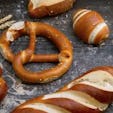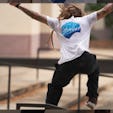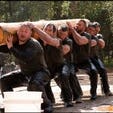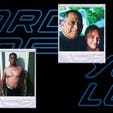If your bench press max has been stuck on the same stubborn plateau for any length of time, one very unique hybrid movement—the JM press—may well be the exercise you need to break through.
Adding another 20 or 30 pounds to your bench is often just a matter of increasing your lockout strength—the top portion of the range of motion where the triceps take over and lock out your elbows.
That’s exactly why JM Blakley, a former elite-level bench press specialist, invented the exercise 20+ years ago.
Inserting the JM press into your weekly routine could mean going from a weight that staples you to the bench to one you’re lifting for reps in short order. You’ll also gain some triceps size in the process, which will go a long way toward making you look like a strong bencher.
What Is the JM Press?
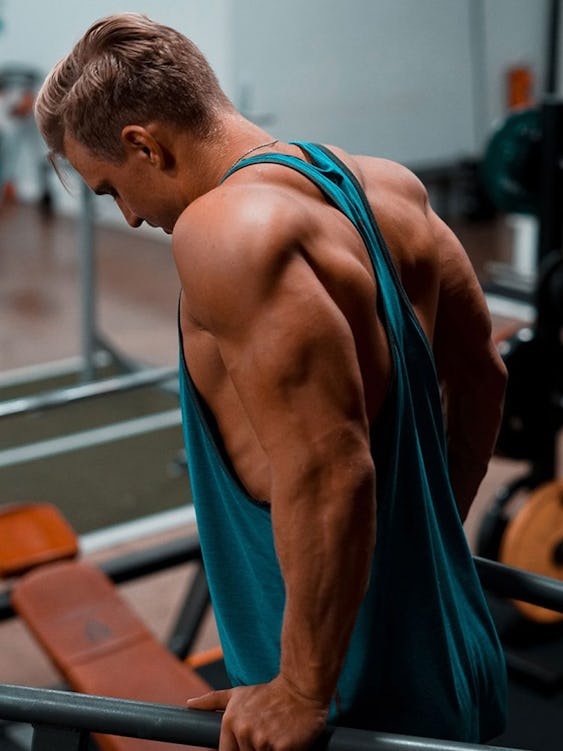
The JM press is essentially a cross between a close-grip bench press and a barbell skull crusher (triceps extension)—both of which are hallmark strength- and mass-gaining exercises for the triceps.
In the close-grip bench press, the lifter uses a narrower grip than on the conventional bench press—such as hands at shoulder-width, or slightly inside—to emphasize triceps involvement over the chest and shoulders. With the skull crusher, the bar is lowered to the forehead, putting a stretch on the triceps to increase activation. The JM press puts both exercises together in a movement that works the triceps in the range of motion they use to lock out the elbows in the last few inches of a bench press rep, when the weight is going up overhead. This makes it very specific to bench press gains, and, therefore, a popular exercise among powerlifters.
In an interview with Dave Tate (powerlifting coach and founder of EliteFTS), JM Blakley said the following, when recalling how he came to invent his namesake exercise: “I’m super big on recovery… I couldn’t do three, or four, or even two triceps exercises after a while, because the [cumulative] load was so much… So how can I get the value of a skull crusher and a close-grip bench and not have to do both of them? I blended them together.”
In other words, the JM press was an efficiency hack to get the most out of two great bench press-building exercises for the price of one.
“A close-grip bench press normally comes to the lower part of your chest, and a skull crusher ends at the top of the forehead,” says Julia Ladewski Anto, CSCS, a strength and conditioning coach to powerlifters, athletes, and CrossFitters of various ages, and an elite powerlifter herself (julialadewski.com). “With the JM Press, you’re looking to bring the bar to the chin/neck area.” [Exactly where you bring the bar largely depends on the length of your upper and lower arms, as you’ll see in the description below.]
Benefits of the JM Press
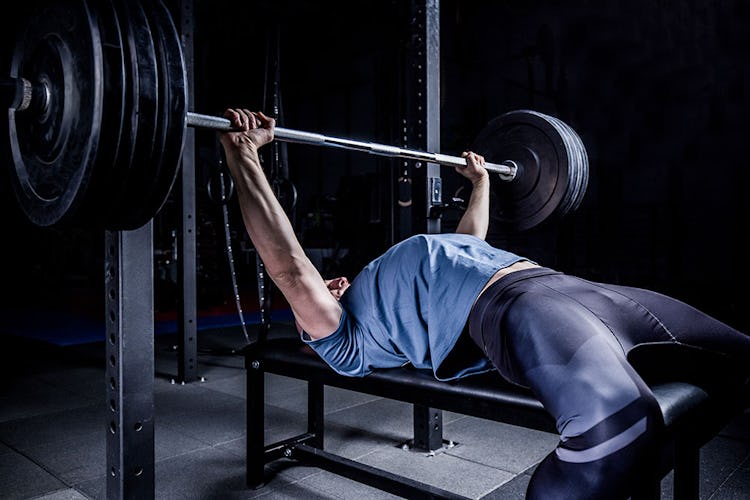
When powerlifters do an exercise specifically for the triceps, it’s usually to increase lockout strength for the bench press. This is certainly the case with the JM press. Most lifters will stall somewhere past the halfway point as they press the bar up. This is known as the sticking point. The JM press was Blakely’s solution to the problem, as it strengthens the triceps at precisely the point where they would normally be unable to extend the elbows with a heavy load.
“I’d put the JM press into a training program for someone who needs to build pure triceps strength,” says Anto. “I would gear it more toward powerlifters and those looking to improve their bench press.” Conventional triceps exercises like cable pushdowns and kickbacks, she says, are fine for building triceps muscle size, but they won’t develop strength that’s specific to the bench press, mainly because the movement mechanics are too different. Another advantage of the JM press over more conventional triceps moves: loading potential.
“You can move more weight on JM presses than on a skull crusher,” says Anto, “and really push the limit on that lower part of the triceps [where the muscle inserts into the elbow]. It may take a few sessions to feel out the movement pattern, but once you’re aware of where on the triceps you should be feeling it, you’re golden.”
While the JM press was really intended for powerlifting training, that isn’t to say that it can’t or shouldn’t be used by those who merely want bigger arms. “It can definitely be used for hypertrophy [muscle gain],” says Anto. “It will overload the triceps, which can create some solid density in those muscles.”
However, Anto says novice lifters may be better served with more standard triceps exercises. “Beginners and general gym goers can get more benefit with greater ease of movement by using close-grip presses, dumbbell presses, and various skull crusher variations,” she says. “I just can’t justify having a general population person use the JM press when there’s a larger learning curve to actually get something out of it.” As you’ll see below, the JM press is a fairly technical lift that needs to be done precisely to see gains, so attempt it only after you’ve gained some experience with the bench press and its more common assistance lifts.
What Muscles Does the JM Press Work?
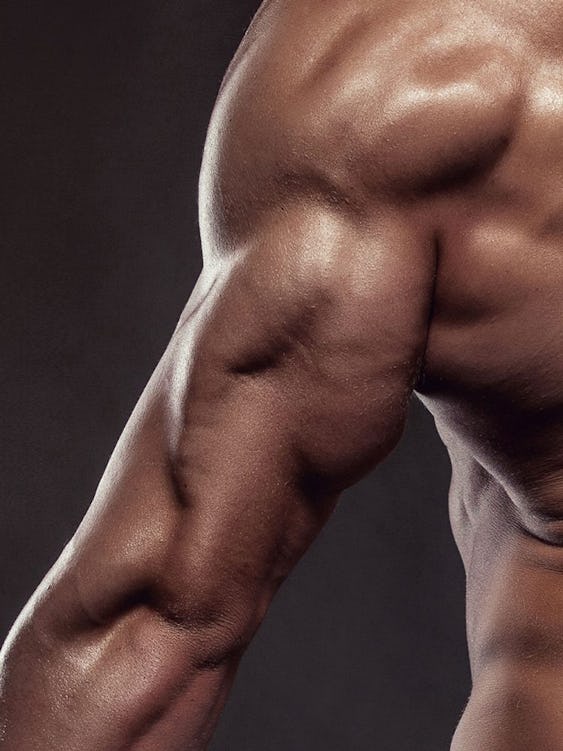
The JM press is used to target the triceps, but there is some movement at the shoulders, which makes it a compound exercise that works the pecs and delts a bit as well.
“The [muscle involvement] really depends on how you perform the exercise,” says Anto. “I’ve seen it doctored over the years and morph into various things from how it was originally intended. The original way the exercise was performed was meant to focus on the triceps—specifically the lower part of the triceps, near the elbow—and you tried to keep any shoulder rotation out of it.” This is the version we’ll describe how to do below.
Of the three heads of the triceps brachii muscle, the JM press emphasizes the lateral head the most, similar to how a close-grip bench press acts on the muscle. The lateral head is the portion of the muscle that runs down the outer side of your arm, and mostly accounts for its horseshoe appearance when well developed. FYI, the long head and medial head of the triceps (on the inner/medial side of the arm) are targeted with overhead and reverse-grip elbow extension movements, respectively. It’s not that the JM press won’t activate these areas, but it doesn’t recruit them as well.
Research confirms that the triceps are involved to a greater extent when doing barbell presses with a narrow grip versus a wide one. The JM press falls in the narrow-grip category. Furthermore, researchers have found that the triceps’ lateral head is highly active during the top portion of a bench press.
How to Properly Do the JM Press
Here’s how to perform the JM press as originally intended by its creator, JM Blakley.
Step 1. Use a bench press station, or lie back on a bench that’s situated in a power rack, making sure you’re scooted forward enough so that the bar is behind your head when it’s racked (not over your face).
Step 2. Grasp the barbell with hands roughly shoulder-width apart. For most people, this will mean hands 15–16 inches apart—a narrower grip than you’d use for a standard bench press. For the highest degree of safety, keep your thumbs wrapped around the bar.
Step 3. Unrack the bar and begin with your arms fully extended overhead. Make sure the bar is stacked over your wrists and forearms. Don’t let your wrists roll backward into extension.
Step 4. Tuck your elbows about 45 degrees from your sides and point them forward (toward your feet). They should stay in front of the bar throughout the exercise. Bend your elbows and lower the bar, under control, straight down to somewhere between the very top of your upper chest and your chin; a lot of coaches cue to lower the bar to the throat.
Step 5. When your forearms and biceps touch each other, that’s the end of the range of motion. For those with bigger arms (particularly large biceps), the stopping point will be roughly 90 degrees of elbow flexion; others may go past 90 degrees, but there’s no need to touch the bar all the way to your chin/throat/upper chest.
Step 6. From the bottom of the rep, extend your elbows to explosively press the bar straight up (not in an arc like a standard bench press). “Because of the way the bar moves,” says Anto, “you’re going to have to cock your wrists up a bit, then punch your hands toward the ceiling.” That is, actively flex your wrists as you lower the bar to keep them straight, and maintain that tension as you press the bar.
Sets/Reps/Load
The JM press is most effectively used with relatively heavy weights, but you need to work up to such loading gradually. As Blakley notes in this video, when starting out with the exercise, it’s best to go very light and do a higher number of total reps to learn the movement and practice technique. Specifically, he recommends 4–6 sets of 10 reps, using “extremely light weight.” Do this once a week for a month or so before moving onto heavier loads.
When you’re sure you’ve got the form down, try Blakley’s go-to set/rep scheme: 4 sets of 6 reps, using the heaviest weight that you can handle for roughly six reps on your first set. As you fatigue, you’ll inevitably get fewer reps on the subsequent sets, but stick with the same weight until you can do all 4 sets for 6 reps.
The JM press should be the first exercise you do for triceps in whichever workout you train them. In other words, if you’re doing an arm day, do the JM press as your first triceps exercise, so you’re fresh and can give it your best focus. If you train triceps on the same day you bench press, do the bench press first, and then the JM press.
Safety Tips for the JM Press
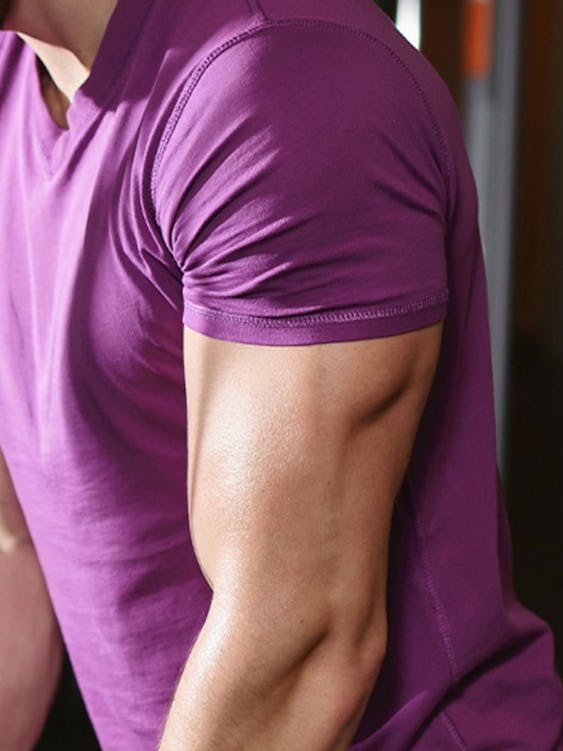
The JM press is an unorthodox (some would say awkward) exercise that, if done carelessly, can place excessive strain on the elbows. As mentioned above, start off very light and keep the overall volume in check. Limit your frequency on the JM press to only once per week.
“Take it slow,” Blakley told Dave Tate in their interview. “Build it into your program [gradually]… It builds so much tendon strength, but that takes time.”
Anto echoes these sentiments, but she doesn’t necessarily consider the JM press to be any more dangerous than other related exercises.
“It’s a different movement pattern, so it takes practice to get that right, and then to get it right enough to be able to load it and actually get something out of it,” she says. “Sure, if you load too heavy, too fast, the bar could fall on your face, but then again, so can a bench press or a skull crusher. I’d be more concerned about loading slowly and getting used to the stress that’s placed on the triceps tendon, as it can feel a little taxed afterward. Start slowly and work up.”
Can I Use Dumbbells?
As an exercise that’s specifically intended to boost bench press strength, the JM press’s most effective application is with a barbell. But can you use dumbbells instead if you’re training at home, or for whatever reason would rather not use a bar?
“Possibly,” says Anto, “but I think it would be a little more awkward than it already is, since you’d have two individual weights [to stabilize]. The straight line of the barbell allows you to stay a little more balanced and in control. That’s not to say it can’t be done, but again, the exercise was meant to be loaded heavy, and I don’t know if you could get the same movement pattern or loading with dumbbells as you could with the barbell.”
A JM press done with dumbbells, then, may be a useful exercise for triceps muscle mass, but it wouldn’t have much carryover to benching max weight.
Great JM Press Alternatives
The JM Press is a highly unique exercise, so it’s hard to find a comparable move that targets the same movement path and muscles.
“To this day, I’ve never done an exercise that directly stretches that lower triceps tendon like JM Presses,” says Anto. “Most alternatives would be some type of close-grip press or floor press, but now you’re getting into shoulder and chest work as well.”
That said, if you’re not a seasoned bencher who’s already putting up huge numbers, you probably don’t need anything fancy to see gains.
Close-Grip Bench Press
Start with the standard close-grip bench press, which will train your triceps to contribute more to the movement, thereby boosting your lockout strength.
How To Close-Grip Bench Press
Step 1. Lie on the bench and arch your back, pulling your shoulder blades down and together. Grasp the bar at shoulder width or just inside, and pull it out of the rack.
Step 2. Take a deep breath, tighten your glutes, and lower the bar to your sternum, tucking your elbows to your sides at 45 degrees on the descent. When the bar touches your body, push your feet into the floor and press the bar up at the same time.
Close-Grip Board Press
Bench presses of any kind can be done with a board (a block of wood with a handle) held against the chest to shorten the range of motion. This allows you to work just the lockout range and train even heavier to strengthen it maximally. Board presses can be done with a standard bench press grip, but to target the triceps to a greater extent, Anto recommends close-grip board presses.
“Sometimes you need to do an exercise that will allow you to handle weights near your max,” says Anto, “which will allow your nervous system to adapt to moving that weight on a regular basis.” She recommends using two to three boards depending on your arm length (longer-armed lifters need more boards to keep the exercise in the triceps’ main range of motion). “You’re looking for slightly less range of motion so you can load, but you don’t want it so high that you aren’t stressing the triceps.”
How to do the Close-Grip Board Press
Step 1. Lie back on the bench and grasp the bar with a shoulder-width grip (or slightly narrower), and have a partner place two to three wooden boards on the middle of your chest. Have your partner hold the boards in place on your chest throughout the set. If you don’t have a partner to hold the boards for you, you can use Repboards (repelbullies.com), as shown here, which are hard foam boards that you can clip onto your torso. (Yet another option is to stuff a foam roller under your shirt, so that the roller stops the bar a few inches above your chest.)
Step 2. Unrack the bar, and slowly lower it to the boards, keeping your elbows tucked so that your upper arms are at a roughly 45-degree angle with your torso. On a close-grip bench press (unlike the JM Press), the bar should be lowered toward the lower portion of the pecs.
Step 3. When the bar touches the boards, explosively press back up in a slightly backward arc until the bar is directly over your face.
JM Board Press
This is just a reduced-range JM press, allowing you to zone in on the lockout even more.
How to do the JM Board Press
Step 1. Perform the JM press as described above, but have a partner place two to three boards on your chest as explained in the close-grip board press. (Or use Repboards, or a foam roller.)
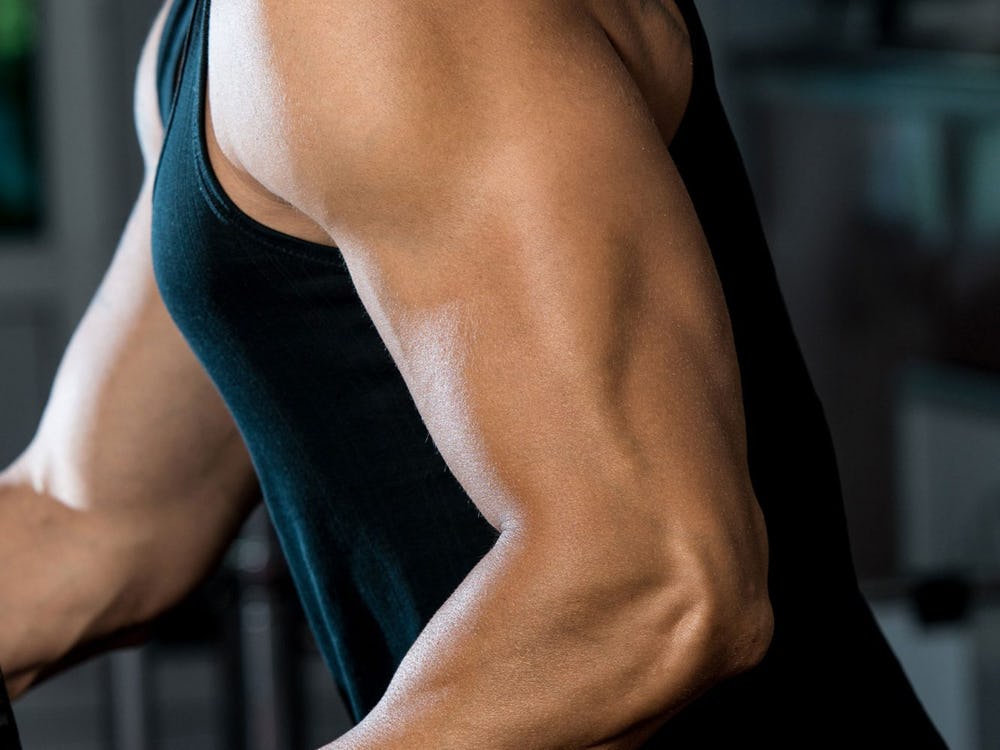
)
